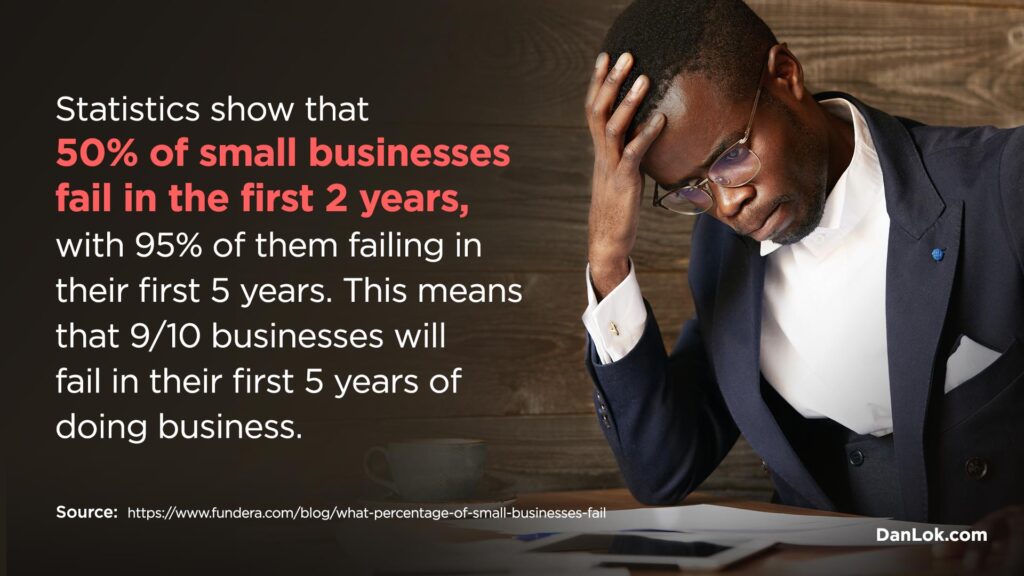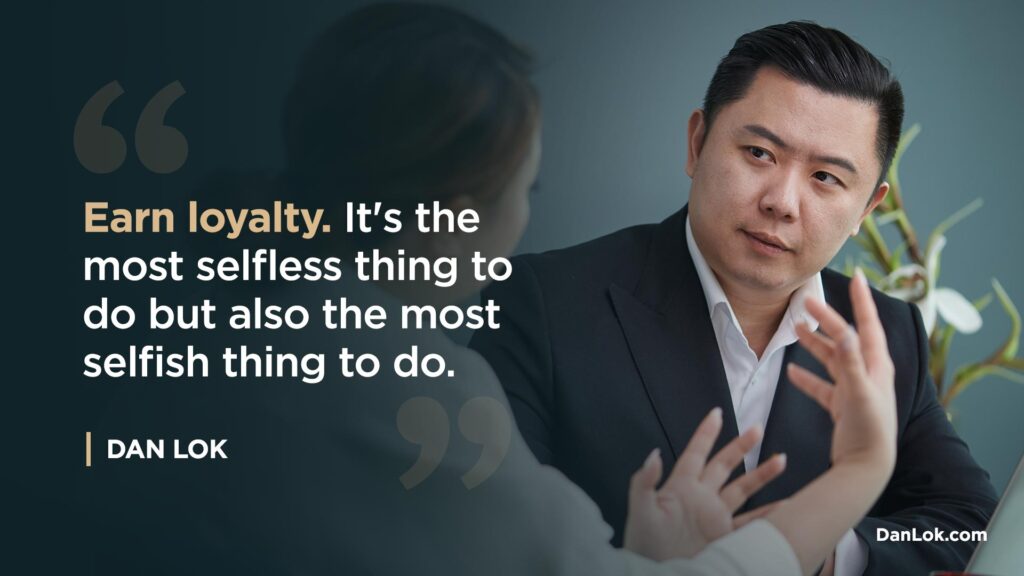Starting a franchise can be a good alternative to starting your own business. Given that most small businesses fail within their first 5 years, starting a franchise comes with a lot less risk. You don’t have to wonder whether or not your business will become successful when starting a franchise, because a well established franchise will already have a history of success. This means you can focus on running the operations of the business, instead of fighting to prevent it from going bankrupt.
However, not everyone is cut out to become a franchisee. Starting a franchise means owning a business that operates within certain boundaries and follows a set system. These guidelines restrict how much freedom and control you have in the business, and in certain cases, may actually harm how successful it will become. If you are the type of person that is more creative, wants to set their own prices or have a voice as to how things should be operated, starting a franchise may not be the best option.
As with all things, there are pros and cons when it comes to starting a franchise or starting your own business. To increase the odds that you will succeed, you need to understand what type of environment allows you to thrive in business. If you’re thinking about starting a franchise, here’s what you need to know before you make a commitment.
Starting a Franchise Allows You To Reduce Your Risk Dramatically
For many business owners, the idea of starting a franchise is an attractive option. Statistics show that 50% of small businesses fail in the first 2 years, with 95% of them failing in their first 5 years. This means that 9/10 businesses will fail in their first 5 years of doing business. As a result, starting a business from scratch is very risky and prone to failure.

This is why most entrepreneurs buy into a franchise and become franchisees. They are buying into an existing system that has a track record of success and is proven to work. And that is why it is so valuable. Because the franchise has already made it past those first few critical years, they’ve already established themselves as a company or brand with a proven reputation. There’s no need to guess whether or not the marketplace will be receptive to what you have to offer – the demand is already there.
On top of using an established company’s reputation as leverage, you’re also able to tap into the resources of the franchising company. Most franchisers have a team of highly trained experts that know what they’re doing and can offer you advice. If you’re new to the world of business or there are certain aspects of the business you’d rather not deal with, the franchise company has a team of people that will handle those tasks for you.
Starting A Franchise Means Buying Into A Proven System
Starting a franchise means buying into the systems that are in place and provided to you. Many entrepreneurs that become franchisers do so because they lack experience on how to operate the business. The offer of becoming a franchisee is enticing, because it allows them to bypass most of their shortcomings and get into what they love to do most – own a profitable business.
Another reason why starting a franchise is so beneficial, is because everything is already laid out for you. The franchise company has already made all the decisions for you ahead of time. These are decisions such as what prices to set your products at, how to run your marketing, and how to operate the business. All you need to do as a franchise business owner, is to follow the plan that’s already laid out for you.

Of course, this means that if you are someone who prefers to have more control over the business, starting a franchise isn’t the best option. You’re better off starting a business from scratch and building it from the ground up.
The Pros and Cons Of Starting a Franchise vs. Starting Your Own Business
For many business owners, the idea of starting a franchise is an attractive option. You dramatically reduce your failure rate, receive a proven system on how to run the business successfully and assistance to help you manage the operations. However, the benefits that make a franchise such an attractive choice are also some of it’s biggest downsides. Many franchises operate under a strict set of guidelines and regulations that do not give their franchisees any leeway. Business owners that want the freedom to run their business the way they want, will find these guidelines suffocating and difficult to follow.
If following rules and guidelines isn’t the type of environment that allows you to thrive, starting your own business is a much better choice. While you may not have access to all of the perks starting a franchise has, it provides you with complete control. This means you have the freedom to set your own prices, offer your own products and change things whenever you feel like it. It also provides you with the option to create your own franchise brand in the future, if your business becomes successful.
If you’re an entrepreneur who wants to minimize their risk, starting a franchise is a more attractive option. It means taking the role of an operator that focuses on executing a system that has been proven to work. However, if following a strict system isn’t what you resonate with, you’re better off starting your own business and being the business owner. Each side has its own pros and cons, which will affect how the business is run.
The Power and Influence Of A Reputable Franchise Brand
When you buy into a franchise and become a franchisee, you are immediately granted a lot of power and influence. A reputable franchise brand has a history of building their reputation and brand, and knows exactly who their audience is. By becoming a franchisee, it means you’re able to leverage the resources of the franchise company to your advantage.

For example, a McDonald’s franchise requires a fee of a million dollars to get started. This is because McDonald’s is literally a money making machine. There’s never a shortage of customers, because it’s a franchise brand that’s well known across the entire world. In fact, it’s so popular that in almost any country you go to, you’re almost guaranteed to find a McDonald’s.
The reason a McDonald’s franchise is so costly, is is because they possess the best system in the world when it comes to selling fast food. Buying into a McDonald’s franchise means buying their reputation, brand name, track record and using it for yourself. They may not serve the tastiest burgers in the world, but they do have some of the best marketing and business operations worldwide.
Starting A Franchise Is A Good Way To Quickly Get Started In Business
A franchise isn’t just a business to help you generate money – it’s a brand that has a number of loyal followers. Becoming a franchisee means tapping into all of the resources that brand or company has to offer. That means you can use their customers, their marketing, their discounts, their coupons and advertisements. And you get access to it all for a monthly royalty. In reality, hiring your own marketing team, running advertisements and coming up with creative marketing campaigns would cost you much more than what you’re paying for.
This is why many entrepreneurs opt into starting a franchise. They understand that becoming a franchisee comes with many perks that they wouldn’t be able to leverage if they started their own business. Instead of waiting 2, 5 or even 10 years before the business picks up, they’re able to immediately tap into these resources and begin profiting as early as day one.
Starting a Franchise Can Come With Many Hidden Fees
Most franchise companies charge their franchisees a monthly royalty fee. This fee can either be a percentage of the profits on a monthly basis, or a flat fee. If you’re thinking about starting a franchise, you should take these fees into consideration as additional expenses.
For some entrepreneurs, the idea of paying a monthly fee is not worth the additional cost in their business. If they possess the skills and knowledge to run their own marketing campaigns and are aware of their market’s needs, there’s no reason for them to buy into a franchise. Most entrepreneurs that become franchisees do so because they want to reduce their risk and leverage the resources of the franchise company. They may not know how to run successful marketing campaigns to attract customers, or simply don’t want to deal with that side of the business. As a result, they don’t mind paying a monthly fee to have someone take care of all of that for them – which is why starting a franchise is an attractive option for them.
On top of a monthly royalty fee, some franchisers also require their franchisees to purchase certain goods or services from the franchiser or affiliated entities. This means that an entrepreneur who does not have a lot of starting capital, may quickly find themselves broke before they’ve even begun to generate profit from the business franchise.

Be aware of all the terms and conditions outlined in the contract when starting a franchise. If you are an entrepreneur who does not possess a lot of business experience, you may find yourself being taken advantage or even exploited by the members of a larger, more powerful corporation. Read the fine print and ensure you understand all of your responsibilities before making a commitment.
A Franchise Is Not Guaranteed To Be Successful
Even though becoming a franchisee comes with many perks, it doesn’t mean you’re guaranteed to succeed. Contrary to what many people believe, even a wildly popular franchise like McDonald’s can fail. In fact, as a franchisee you could do everything by the book perfectly and still fail. This is because there are other variables that are outside of your control.
One of the main reasons why franchises fail is because of location. Just because a franchise is wildly successful in one city, does not necessarily mean it will generate the same results in another. The neighbourhood, the city, what their target audience is and the needs of the marketplace, are all factors you need to account for.
For example, a Chinese take-out franchise may do extremely well in an Eastern country, but do very poorly in a Western one. This is because the needs of the marketplace are different. There may not be that many people that like eating Chinese food in that geographic region. Or maybe Westerners aren’t able to read the menu because it’s all in Chinese – which is a guideline you are forced to follow. All of these factors impact the number of customers you’ll get, which ultimately affect how much revenue you’ll generate.

As with any sort of business opportunity out there, there will always be risks. This is why it’s important to do your research beforehand, and understand how things work before you go in. Don’t make the mistake of assuming a franchise is guaranteed to succeed, because it’s not. A franchise provides you with a proven system that you can leverage to operate your business. However, how successful you will ultimately become, depends on how well you can manage the business and account for the other variables that come into play.
Get Clear On Your Strengths, Weaknesses and Goals
If you’re struggling to decide between starting a franchise or starting your own business, analyze your own strengths and weaknesses. What kind of person are you? What type of environment allows you to thrive? When you are clear on what your strengths and weaknesses are, you’ll be much more likely to succeed. Even if the opportunity to own a McDonald’s franchise is presented to you, if you know that following rules and guidelines isn’t something you can tolerate, there’s no point buying into a franchise brand. Your heart isn’t in the business, which means you’ll start cutting corners and slacking off. And eventually, that’ll lead to your business failing.
Analyzing your own needs and desires is the first step when it comes to succeeding in business. Successful businesses know a business is only as successful as the person who is managing it, which is why billion dollar companies like Microsoft and Apple have competent CEO’s running the company. The founder may not have the skills to run the business, which is why they hire someone who is capable and possesses the skills to do so. Think about your business from the same perspective – whether it’s starting your own business or starting a franchise.

As well, you will also want to think about how your decisions will impact the future. If you have hopes of one day starting a family and passing your business down to your children, starting your own business is the better option. Instead of forcing your children to follow a set structure and guidelines in place, you can provide them with the freedom to run the business the way they want to, in place of your leadership.
Get clear on your strengths, weaknesses and goals, and you’ll dramatically increase your success rate in any business venture.
Your Invitation To The World’s Most Exclusive Advisory Board For Distinguished Entrepreneurs
Starting a business vs. starting a franchise has their own pros and cons. If you’re an entrepreneur who has capital and doesn’t mind following a system, starting a franchise can be very beneficial. Becoming a franchisee allows you to leverage the brand name, reputation and business systems that are provided to you. You’ll dramatically reduce your risk of failure, and do very little management in terms of how to run the business. All the decisions on how to run the franchise will be provided to you by the franchising company. You just need to listen and execute whatever they tell you to do.
However, if you’re the kind of person that doesn’t like being told what to do, you’re better off starting your own business from scratch. You won’t be able to leverage the resources and perks you would get by starting a franchise, but you will have control of the business. You can run it the way you want, set your own prices, and even take days off whenever you feel like it. If you do choose to become a business owner, be aware that the odds are against you.
This is why many entrepreneurs seek out coaches and mentors who have experience running a successful business. By tapping into the knowledge and experience of someone who’s been there and done it, they’re able to dramatically increase their chances of success and achieve results faster than if they did it alone.
Dragon 100 is the world’s most exclusive advisory board for entrepreneurs committed to their business success. Members receive personal mentoring and private lessons from Sifu Dan himself on how they can add 6 or 7 figures to their business in as little as 12 months. Click here to learn more about becoming a Dragon 100 founder today.





 Discover How To Get Paid Based On The Value You Bring
Discover How To Get Paid Based On The Value You Bring 






















